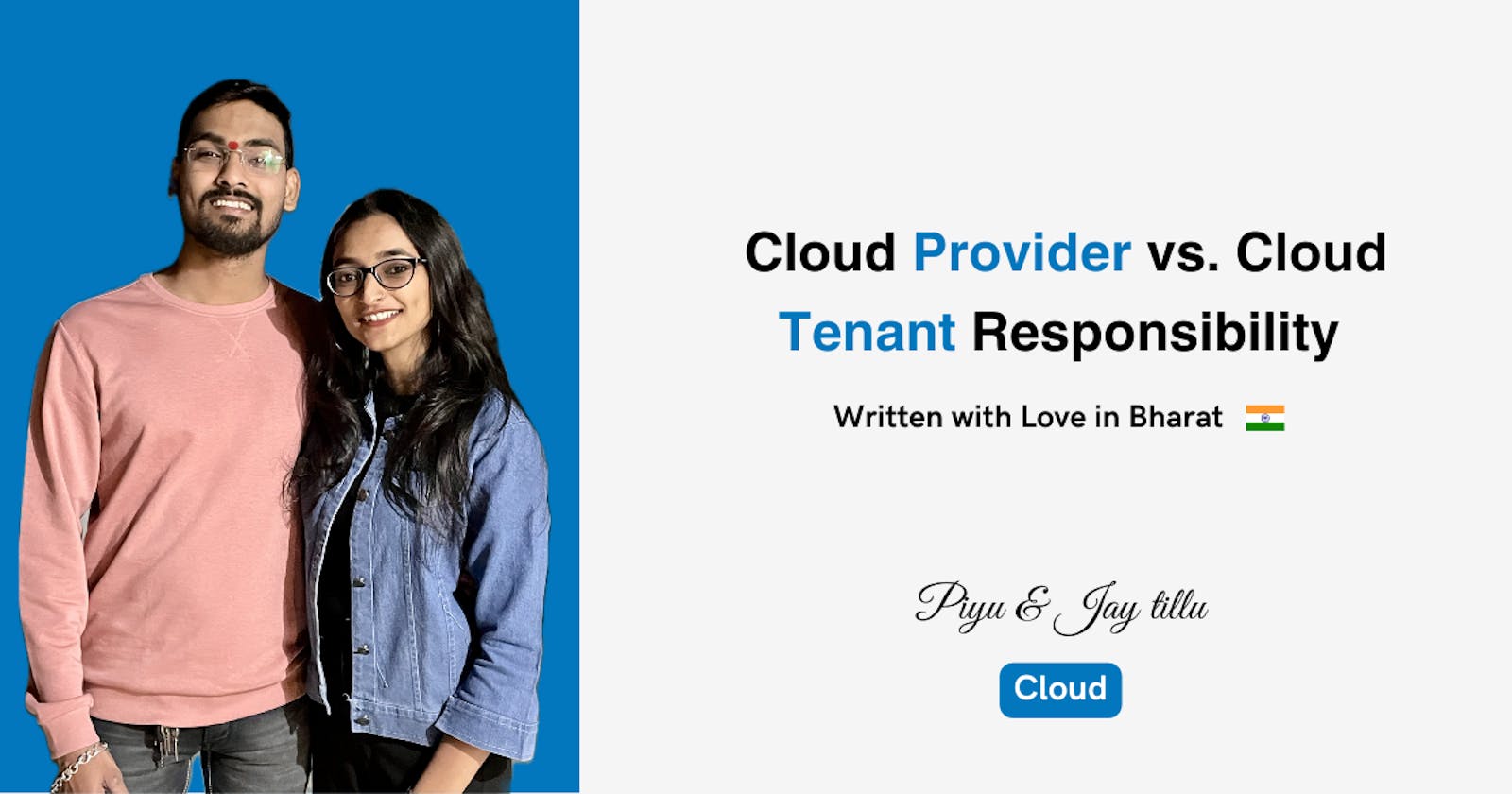Cloud Provider vs Cloud Tenant responsibilities in IaaS, PaaS, and SaaS
3 min read

Cloud computing has revolutionized how businesses and individuals access and manage computing resources. Cloud services are broadly categorized into Infrastructure as a Service (IaaS), Platform as a Service (PaaS), and Software as a Service (SaaS). Each model comes with its responsibilities for both the cloud provider and the cloud tenant (user). In this blog, we'll delve into the distinct roles and responsibilities in IaaS, PaaS, and SaaS, shedding light on the division of tasks between the provider and the tenant.
IaaS (Infrastructure as a Service)
Cloud Provider Responsibilities
Responsible for physical infrastructure (servers, storage, networking) and its maintenance.
Manages the underlying hardware, data centers, and virtualization layer.
Ensures the security, availability, and reliability of the infrastructure components.
Cloud Tenant Responsibilities
Manages the operating system, middleware, runtime environment, applications, and data.
Has control over the configuration and customization of the virtual machines.
Responsible for security measures at the OS level and above.
Example: AWS EC2, Azure Virtual Machines, Google Compute Engine.
PaaS (Platform as a Service)
Cloud Provider Responsibilities
Provides a platform that includes the runtime, development tools, databases, and other necessary resources.
Manages the underlying infrastructure, runtime environments, and middleware.
Ensures the scalability, availability, and performance of the platform.
Cloud Tenant Responsibilities
Focuses on developing and deploying applications without worrying about the underlying infrastructure.
Manages the application code and data.
Configures application settings and parameters.
Example: Heroku, Google App Engine, Microsoft Azure App Service.
SaaS (Software as a Service)
Cloud Provider Responsibilities
Provides complete software applications over the internet.
Manages the underlying infrastructure, application, data, security, and updates.
Ensures high availability and performance of the software.
Cloud Tenant Responsibilities
Uses the software application provided by the cloud provider.
Configures user settings within the application.
Typically has limited control over the underlying infrastructure or application code.
Example: Salesforce, Microsoft 365, Google Workspace.
Conclusion
Understanding the responsibilities in IaaS, PaaS, and SaaS is crucial for both cloud providers and tenants. While IaaS offers more control over infrastructure, PaaS abstracts away complexities, and SaaS provides a fully managed software experience. The choice of model depends on the specific needs and preferences of the tenant, balancing control and abstraction. As the cloud computing landscape continues to evolve, these distinctions will play a significant role in shaping the future of digital infrastructure.
Learn More About Cloud Computing
Difference between Elasticity and Agility in Cloud Computing
How Mainframe Computers Laid the Foundation of Cloud Computing
